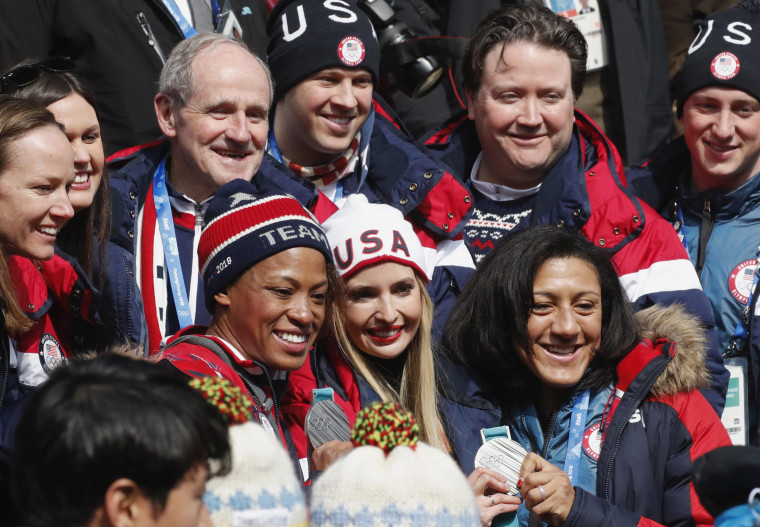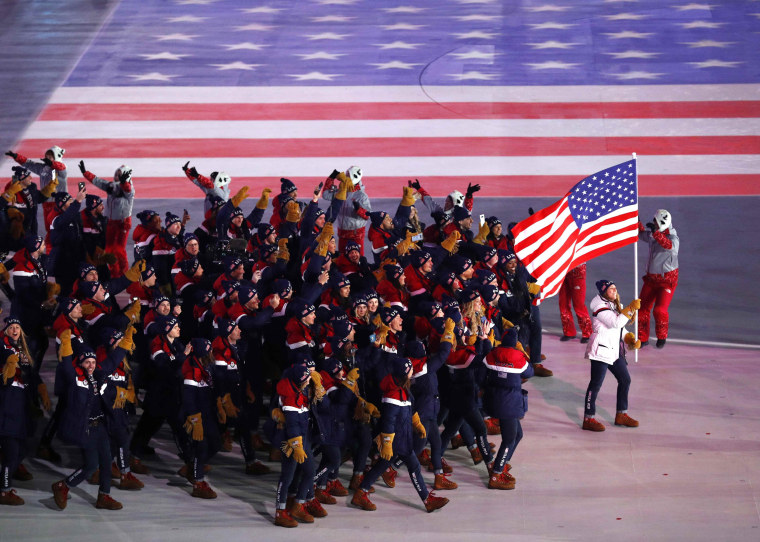It was an incredible honor last week to join Team USA and celebrate American excellence at the closing ceremonies of the 2018 Winter Olympics. Each athlete had a dream of making it to this competition, each worked incredibly hard to achieve that goal, and each inspires our children to believe that they, too, can carry our flag into the stadium one day.
Our Olympic athletes had the opportunity to engage in sport at a young age, which allowed them to develop their talents and learn the grit, drive, teamwork and resilience that enabled them to compete at the highest level and represent Team USA. But to ensure that every American child has that same chance, we must break down barriers to youth sports participation and empower each child to reach his or her full potential through sport and play.
Whether a student aspires to be an Olympic athlete or simply enjoys being a part of a team, youth sports gives children and young adults a unique opportunity to develop their talents, to learn how to work with others and to persevere in the face of adversity. These are invaluable lessons in preparing students to succeed in the future.
Studies have shown that children who are involved in sports have greater self-discipline, higher self-esteem and are better at working with others.
Studies have shown that children who are involved in sports have greater self-discipline, higher self-esteem and are better at working with others. Individuals who acquire these skills have proved that they can excel in the workplace and earn wages that are higher than their peers who did not compete in athletics, according to recent research.
Another report from the Aspen Institute found that students who participate in sports have up to 40 percent higher test scores, and are 15 percent more likely to attend college. They are less likely to commit a crime or to suffer from mental or physical health problems. When students have a brighter future, they help our communities thrive and our nation prosper.
Yet in recent years, youth sports participation has declined noticeably. According to data released by the Aspen Institute’s Sports & Society Program, in 2008 nearly 45 percent of America’s students age 6 to 12 were on a sports team. In 2016, this was true for only 37 percent of children.
Even more troubling, the number of economically disadvantaged students playing on sports teams has decreased significantly. As Robert Putnam writes in “Our Kids,” more than half of all high schools have adopted pay-to-play policies, often requiring students to pay a fee to join a school team, in addition to paying for equipment. These costs often total $300 to $400 per student, money that many parents can simply not afford. Girls’ participation has fallen even more drastically. By the time girls reach 14, they are dropping out of athletics at two times the rate of boys.
Before fees were instituted, nearly half of all students played sports, but as fees have become standard, one in every three student athletes whose family makes $60,000 or less has dropped out because of the cost of participating. Whereas, only one in every 10 student athletes whose family makes more than $60,000 has ceased playing because of costs.

This administration is committed to reversing this trend. The president will sign an executive order to partner with groups in the public and private sectors to address declining youth sports participation. Promoting youth sports is an important pillar of our Working Families Agenda. The executive order asks the secretary of Health and Human Services to develop a national strategy to increase youth sports participation to give all children a fair chance at a more promising future. Improved participation in youth sports will also further our goal of building safe communities. When young people have more opportunities to participate in positive, supervised after-school sports programs, studies suggest they are less likely to be involved in, or be a victim of, crime.
We believe that every child deserves the chance to play and engage in sports and recreational activities, regardless of their zip code, athletic potential or financial status. We are working to remove barriers to entry so that students can improve their lives and their future outcomes, and so that we adequately prepare the next generation of leaders to lift up our communities and strengthen our nation.
Ten years from now, when Los Angeles hosts the 2028 Summer Olympics, it’s our dream and our goal that students from all different backgrounds and every corner of our country will come together to achieve their highest aspirations — and to proudly represent Team USA.
Ivanka Trump is advisor to the president. In her role, she works on issues ranging from tax reform to workforce development. Most recently, she led the presidential delegation to the Winter Olympics.

